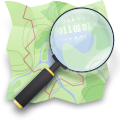| iD | |
|---|---|
 | |
 | |
| Original author(s) | Richard Fairhurst, Tom MacWright, John Firebaugh, Saman Bemel-Benrud, Ansis Brammanis |
| Developer(s) | Multiple contributors |
| Initial release | May 7, 2013 |
| Stable release | 2.35.1 [1] / 14 July 2025 |
| Repository | https://github.com/openstreetmap/iD |
| Written in | JavaScript |
| Platform | Web browser |
| Available in | 78 languages |
| Type | GIS software |
| License | ISC |
| Website | ideditor |
iD is a free software online editor for OpenStreetMap (OSM) geodata created in JavaScript and released in 2013. It is the most popular [2] and the default editor on the main OSM page. [3] [4] iD's features include choosing custom aerial imagery and native support for Mapillary photos.
